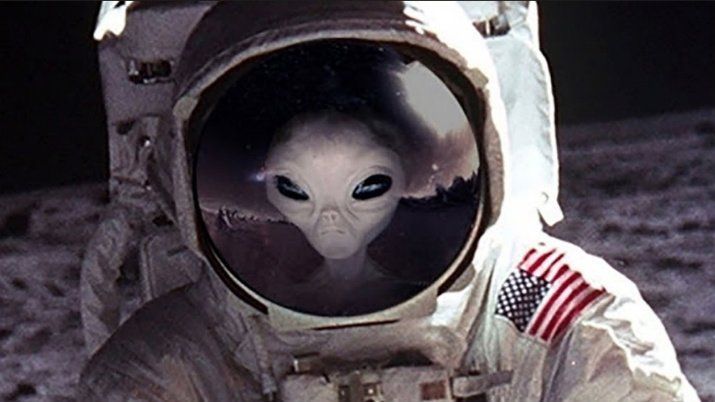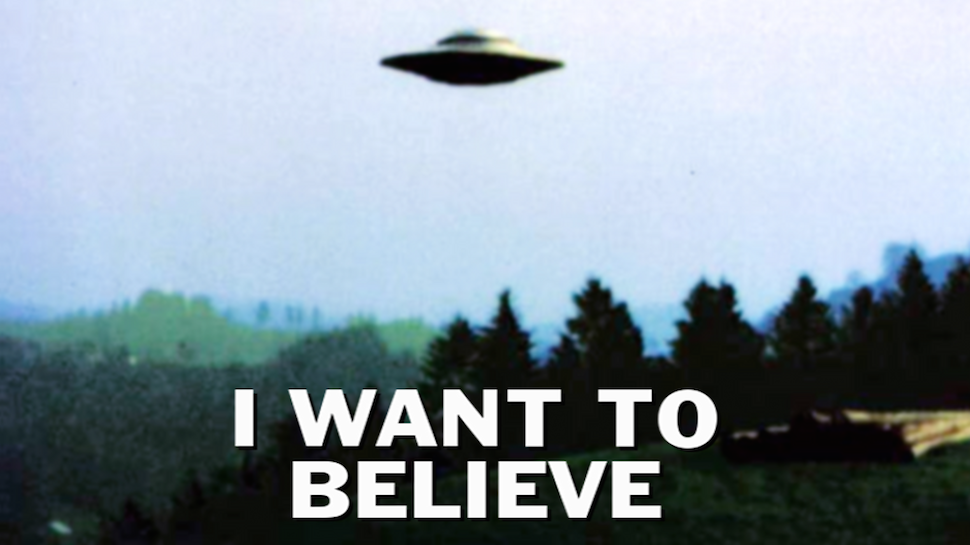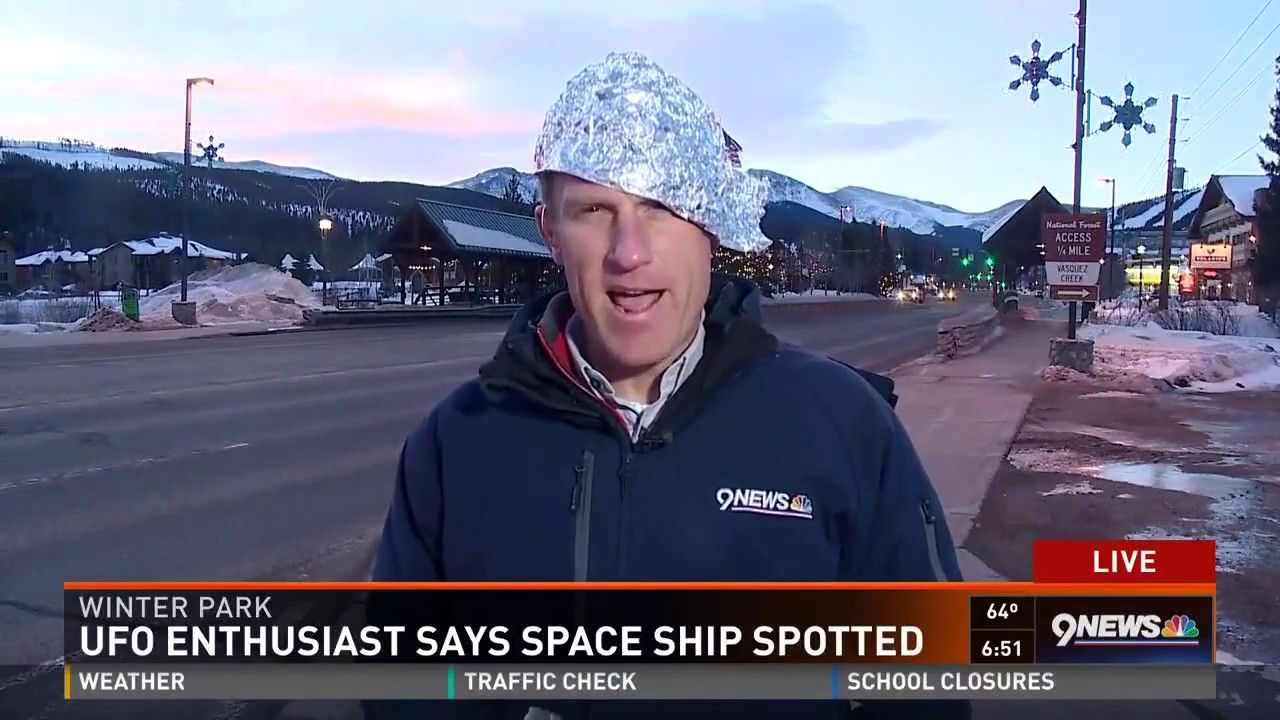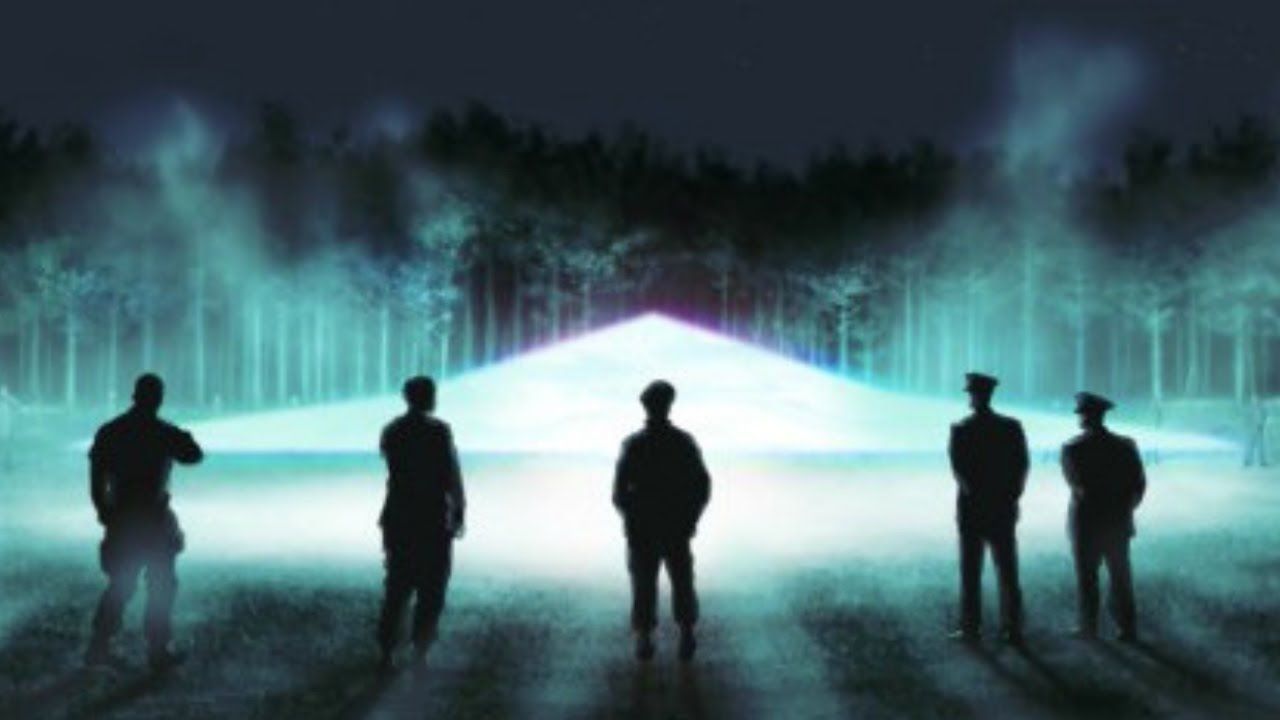by David Wallace-Wells, James D. Walsh, Neel Patel, Clint Rainey,Katie Heaney, Eric Benson, and Tim Urban
March 20, 2018 (nymag.com)
How seriously should you take those recent reports of UFOs? Ask the Pentagon. Or read this primer for the SETI-curious.
• This is an essay in the New York Magazine suggesting “thirteen reasons” why people should take the existence of UFOs and extraterrestrial beings seriously. It cites the revelations made in the New York Times about the secret Pentagon UFO program, the various UFO videos that have been released (or allowed) by the Department of Defense, and President Trump’s new “Space Force” branch of the military.
• The article includes an excerpt from an interview with the former US Senator, Harry Reid, on how he dared to look at the facts and became a central figure in the UFO disclosure effort. (This was followed the next day by a NYM article with the full Harry Reid interview.)
• Scientists are beginning to warm to the idea that this galaxy could very well be teaming with life – even on Mars: “Although [Mars] looks like a barren wasteland these days, there’s little reason to write off any chance we might find aliens residing in some cavern or crevice.”
• Prominent billionaires such as Robert Bigelow, Elon Musk, Paul Allen, and Jeff Bezos have been putting their money and reputations on the line to openly consider extraterrestrial life in our galaxy. Same for many prominent military and government folks such as former British Defence Minister Nick Pope, former Canadian Defense Minister Paul Hellyer, former US Army Intelligence officer Philip Corso, former US Senator and Republican Party Presidential nominee Barry Goldwater, former CIA Director Roscoe Hillenkoetter, former US Congressman and current candidate for governor of Ohio Dennis Kucinich, and former Clinton White House Chief of Staff John Podesta.
• Then there are the numerous UFO/ET encounters from WWII foo fighters and ‘the Battle of Los Angeles’ in 1942, to Betty and Barney Hill in the 1960’s, to the Ohio State “Wow” Signal, to the Phoenix lights in 1997.
• When pondering why we still have no ‘proof’ of an ET presence – ‘are they hiding?’ ‘are they all dead?’ – the possibility is raised that perhaps ‘the aliens are already here and we just haven’t figured it out yet. They might be taking some time to study us before unveiling themselves, or maybe they have already let themselves be known to certain groups.’
• [Editor’s Note] While the article’s writers are keen to discuss the wide spectrum of ufology from the plausible to the most implausible, this is nevertheless a positive step forward for the stubbornly jaundiced and myopic mainstream community. With seventy years of strong circumstantial and anecdotal evidence of the existence of UFOs and extraterrestrial visitors to the Earth, the mainstream is now beginning to open their minds and take notice.
In the good old days, the arrival of UFOs on the front page of America’s paper of record might have seemed like a loose-thread tear right through the fabric of reality — the closest that secular, space-race America could have gotten to a Second Coming. Two decades ago, or three, or six, we would’ve also felt we knew the script in advance, thanks to the endless variations pop culture had played for us already: civilizational conflicts to mirror the real-world ones Americans had been imagining in terror since the beginning of the Cold War.
But when, in December, the New York Times published an undisputed account of what might once have sounded like crackpot conspiracy theory — that the Pentagon had spent five years investigating “unexplained aerial phenomena” — the response among the paper’s mostly liberal readers, exhausted and beaten down by “recent events,” was markedly different from the one in those movies. The news that aliens might actually be visiting us, regularly and recently, didn’t provoke terror about a coming space-opera conflict but something much more like the Evangelical dream of the Rapture the same liberals might have mocked as kooky right-wing escapism in the George W. Bush years. “The truth is out there,” former senator Harry Reid tweeted, with a link to the story. Thank God, came the response through the Twitter vent. “Could extraterrestrials help us save the Earth?” went one typical reaction.
Then, in March, a third video emerged, featuring a Navy encounter off the East Coast in 2015, with the group that released it hinting at an additional trove. “Why doesn’t the Pentagon care?” wondered a Washington Post op-ed — surely the first time the newspaper of Katharine Graham was raising a stink about aliens. The next week, President Trump seemed to announce he was creating an entirely new branch of the military: “We’ll call it the Space Force.” You could be forgiven for thinking you’d woken up in a science-fiction novel. At the very least, it is starting to seem non-crazy to believe. A recent study shows half the world already does.
Alien dreams have always been powered by the desire for human importance in a vast, forgetful cosmos: We want to be seen so we know we exist. What’s unusual about the alien fantasy is that, unlike religion, nationalism, or conspiracy theory, it doesn’t place humans at the center of a grand story. In fact, it displaces them: Humans become, briefly, major players in a drama of almost inconceivable scale, the lasting lesson of which is, unfortunately: We’re total nobodies. That’s the lesson, at least, of a visit from aliens, who got here long before we were able to get there, wherever there is; if humans are the ones making first contact, we’re the advanced ones and the aliens are probably more like productive pond scum, which may be one reason we fantasize about those kinds of encounters a lot less than visits to Earth. Of course, when the aliens are the explorers, we’re the pond scum.
But a lot of people in the modern world will take that bargain, which should probably not surprise us given how dizzying, secular, and, um, alienating that world objectively is. Most conspiracy theory is fueled by a desire to see the universe as ultimately intelligible — the bargain being that things can make sense, but only if you believe in pervasive totalitarian malice. Alien conspiracy theory keeps the malice (cover-ups at Roswell, the Men in Black). But rather than benzo comforts like order and intelligibility, it offers the psychedelic drama of total unintelligibility — awe, wonder, a knee-wobblingly deep, mystical experience of existential ignorance.
Which does mark a change. Beyond the mysticism, American stories of alien encounters have been (often anxious) meditations on the status of American power — meditations informed, surely, by both the memory of European settlers, for whom “first contact” was a story of triumphant genocide, and sympathy for those they trampled. Given the option, America will always prefer to play the cowboy, and through the post–Cold War 1990s, the dominant alien-encounter template was still the swaggering military strut of Independence Day. (The closest thing we got to a counterpoint was the cover-up paranoia of The X-Files, which just expressed a darker faith in the same American power.) By the time we got an alien epic for the War on Terror era, even Spielberg staged it as a story about armed conflict: The War of the Worlds. Of course, in that story, the winner was always going to be the humans — that is, the Americans. And then came the financial crisis, the recession, and Trump, and the new hope that E.T. may take pity on us.
Elsewhere in the world, where things are looking up, relatively speaking, you might expect a different perspective on aliens — and indeed, as The Atlantic’s Ross Andersen documented last fall, the Chinese have recently opened the world’s largest radar facility to listen for signs of aliens, wherever they are out there. But even our future Chinese overlords, projecting power for the first time into the ever-receding reaches of the universe, are a bit nervous about aliens; as Andersen points out, their popular science fiction bears the evidence. And why wouldn’t they be? They have their own memory of colonial contact — the Opium Wars, the end of that empire — to reckon with. And, besides, the unknown is just scary. Things have to get pretty bleak before you take a chance on the arrival of a total blank slate, just for the sake of change. —David Wallace-Wells
1. The Government Literally Just Admitted It’s Taking UFOs Seriously
And, according to researchers, it’s only pretended to end the program.
In 1952, a CIA group called the Psychological Strategy Board concluded that, when it came to UFOs, the American public was dangerously gullible and prone to “hysterical mass behavior.” The group recommended “debunking” campaigns to tamper the public’s interest in unexplained phenomena. But the government seems to have been interested, too: In December, the Pentagon confirmed the existence of the Advanced Aerospace Threat Identification Program. Created in 2007 by senators Ted Stevens (who reported being chased by a mysterious object), Daniel Inouye, and then–Majority Leader Harry Reid, and funded with $22 million of “black money” from the Department of Defense’s budget, the program investigated and evaluated reports of UFO sightings, many of which came from American service members.
So much of what the program uncovered remains classified, but what little we know is tantalizing. Based on data it collected, the program identified five observations that showed mysterious objects displaying some level of “advanced physics,” also known as “stuff humans can’t do yet”: The objects would accelerate with g-forces too strong for the human body to withstand, or reach hypersonic speed with no heat trail or sonic boom, or they seemed to resist the effects of Earth’s gravity without any aerodynamic structures to provide thrust or lift. “No one has been able to figure out what these are,” said Luis Elizondo, who ran the program until last October, in a recent interview.
Elizondo has also talked about “metamaterials” that may have been recovered from unidentified aerial phenomena and stored in buildings owned by a private aerospace contractor in Las Vegas; they apparently have material compositions that aren’t found naturally on Earth and would be exceptionally expensive to replicate. According to a 2009 Pentagon briefing summarized in the New York Times, “the United States was incapable of defending itself against some of the technologies discovered.” This was a briefing by people trying to get more funding — but still.
Some of the accounts Elizondo and his team analyzed supposedly occurred near nuclear facilities like power plants or battleships. In November 2004, the USS Princeton, a Navy cruiser escorting the aircraft carrier USS Nimitz off the coast of San Diego, ordered two fighter jets to investigate mysterious aircraft the Navy had been tracking for weeks (meaning this was not just a trick of the eye or a momentary failure of perspective, the two things most often blamed for unexplained aerial phenomena). When the jets arrived at the location, one of the pilots, Commander David Fravor, saw a disturbance just below the ocean’s surface causing the water to roil around it. Then, suddenly, he saw a white, 40-foot Tic Tac–shaped craft moving like a Ping-Pong ball above the water. The vehicle began mirroring his plane’s movements, but when Fravor dove directly at the object, the Tic Tac zipped away.
The Pentagon has said funding for the program ran out in 2012 and wasn’t renewed. But Elizondo has claimed the project was alive and well when he resigned in October. —James D. Walsh
2. Harry Reid Says We’re Not Taking Them Seriously Enough
The former Senate majority leader is definitely a truther.
Eric Benson: I’m curious about just where your interest in this subject comes from.
Harry Reid: Bob Bigelow [the founder of Bigelow Aerospace and Budget Suites]. He’s a central figure in all this. When he was a young man, he heard a story from his grandparents about driving down from Mt. Charleston, near Las Vegas, where they saw a so-called flying saucer, for lack of a better description. Bob became a very wealthy man. He would pay for these conferences about UFOs, and he would bring in scientists, academics, and a few nutcases.
There were people trying to figure out what all this aerial phenomena was. Bob started sending me tons of stuff. Mainly what interested me is that so many people had seen these strange things in the air.
EB: So tell me how this program got started.
HR: I was in Washington in the Senate, and Bob called me and said, “I got the strangest letter here. Could I have a courier bring it to you?” I said sure. He didn’t want to send it to me over the lines, for obvious reasons.
The letter said, “I am a senior, longtime member of this security agency, and I have an interest in what you’ve been working on. I also want to go to your ranch in Utah.”
Bigelow had bought a great big ranch. All this crazy stuff goes on up there — you know, things in the air. Indians used to talk about it, part of their folklore.
So I called Bigelow back and said, “Hey, I’ll meet with the guy.” The program grew out of that, to study aerial phenomena.
We decided it would be [funded by] black money. I wanted to get something done. I didn’t want a debate where no one knew what the hell they were talking about on the Senate floor.
EB: I saw that you tweeted, “We don’t know the answers, but we have plenty of evidence to support asking the questions.” To you, what’s the most compelling evidence to support asking the questions?
HR: Read the reports. We have hundreds of — Eric, two, three weeks ago, maybe a month now, up in Montana, they had another strange deal at a missile base up there. It goes on all the time.
EB: Do you know things about this program that you can’t discuss publicly?
HR: Yeah.
3. Scientists Are Suddenly Much More Bullish About the Possibility of Life Out There
The universe is really big, people.
Just 30 years ago, we had not discovered a single planet outside our solar system. Now we know of more than 3,000 of them, and we know nearly every star in the night sky has at least one planet in its orbit. “Even people who are not terribly interested in science know that we’ve found that planets are as common as fire hydrants — they’re everywhere,” says Seth Shostak, the senior astronomer at the SETI Institute. “One in five or one in six might be a planet similar to the Earth.”
That doesn’t mean we’ll ever find an exact replica of Earth, but maybe we don’t have to. Our study of other planets and moons in the solar system shows us many worlds possess the ingredients necessary for life — an atmosphere, organic compounds, liquid water, and other necessities. (The moons orbiting Jupiter and Saturn, for example, feature whole subsurface oceans.)
And even though these places are extremely harsh environments, that doesn’t mean as much as we might once have thought it did; recent discoveries on Earth itself demonstrate that life is much tougher than we thought. We’ve found organisms in blisteringly hot geysers in Yellowstone National Park, in the darkest crevices under the most ungodly pressures in the deep ocean, in dry hellscapes like the Atacama Desert in Chile (an analogue for Mars). These “extremophiles” don’t need a warm and fuzzy paradise to call home — in fact, they have already evolved to live in environments as harsh as those on other planets. Some, like tardigrades, can even survive the bleak vacuum of space itself. If there’s life in most of those places, “it’s going to be pond scum,” says Shostak. “But it’s alien pond scum. It shows that biology is all over.”
And where there’s biology, there may well be intelligence, and our increasing understanding of evolution also tells us life can evolve faster than we ever anticipated. Millions of years is a long time for us, but it’s the blink of an eye on the cosmic scale. Blink too fast, and you’ll miss that pond scum turning into an intelligent civilization sending out messages every which way, looking for friends.
And we’re now at the point where we could one day find those messages and send a reply. New technology gives us a better chance to actually make contact with extraterrestrials. Our radio telescopes can scan more of the night sky for an intelligent message than ever before. Our optical telescopes and observatories can peer farther into space and look for new planets, moons, and perhaps even signs of something altogether artificial (see “Tabby’s Star”). Our ability to parse volumes of data in mere seconds means we could conceivably survey much of the galaxy in just a few decades. That’s why, in the past few years, Shostak has continually bet a cup of coffee with everyone he knows that humans will find aliens by around 2029. “We’d have to be dead above the neck if we weren’t interested in this,” says Penelope Boston, the director of the NASA Astrobiology Institute. —Neel Patel
4. They’re Especially Bullish About These Planets
Adventures in the “Goldilocks zone.”
Scientists now think every one in five or six planets might be habitable, based on two general criteria: They’re rocky, and they reside in a region of the star’s orbit called the “Goldilocks zone,” where it’s not too cold and not too hot, but just right to allow for liquid water to form on the surface. And where there’s water, there can be life. Extraterrestrial researchers and enthusiasts are most excited about these seven:
Proxima B: The closest exoplanet ever discovered is also a potentially habitable world in its own right, if the intense stellar winds don’t make it barren. It’s not totally inconceivable we might be able to actually send a probe and study it directly this century — even travel to it ourselves one day.
TRAPPIST-1 System: The red dwarf at the center of this possesses a whopping seven planets in its orbit — three of which reside in the Goldilocks zone, but all of which seem to possess some degree of potential habitability — and they’re so close to one another that life on one planet could quickly spread to another.
LHS 1140b: This wouldn’t be a planet we could colonize. It’s almost seven times the mass of the Earth and 40 percent larger, making it a “super-Earth.” But its mass means that it would retain a thicker atmosphere capable of keeping it warmer and more comfortable for life than most other places.
Ross 128 b: One of the best chances we have so far at finding life on another planet. It orbits an inactive red-dwarf star, meaning it’s likely not being bludgeoned by solar radiation. And we’ve detected strange signals emanating from the nearby host star — signals that perhaps have intelligent origins?
Mars: Mars has water, as we’ve known since 2015. Although the planet looks like a barren wasteland these days, there’s little reason to write off any chance we might find aliens residing in some cavern or crevice.
The Ocean Worlds (Europa, Enceladus, Titan): Many of Jupiter’s and Saturn’s moons show signs of possessing a liquid ocean underneath the surface.
GJ 1214b: Nicknamed “waterworld” by scientists; signs of potential clouds give us some hope the planet has an atmosphere.
—N.P.
READ ENTIRE ARTICLE
FAIR USE NOTICE: This page contains copyrighted material the use of which has not been specifically authorized by the copyright owner. ExoNews.org distributes this material for the purpose of news reporting, educational research, comment and criticism, constituting Fair Use under 17 U.S.C § 107. Please contact the Editor at ExoNews with any copyright issue.















